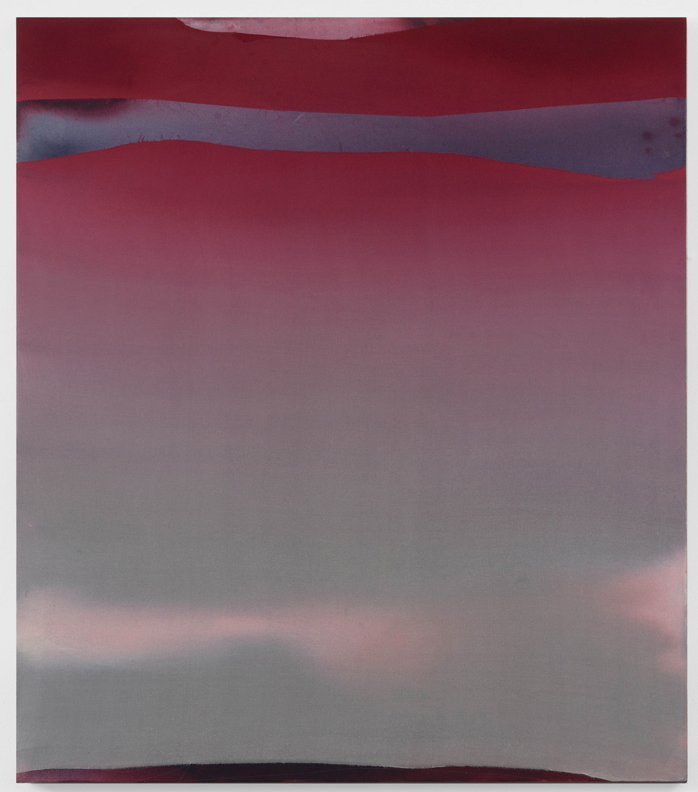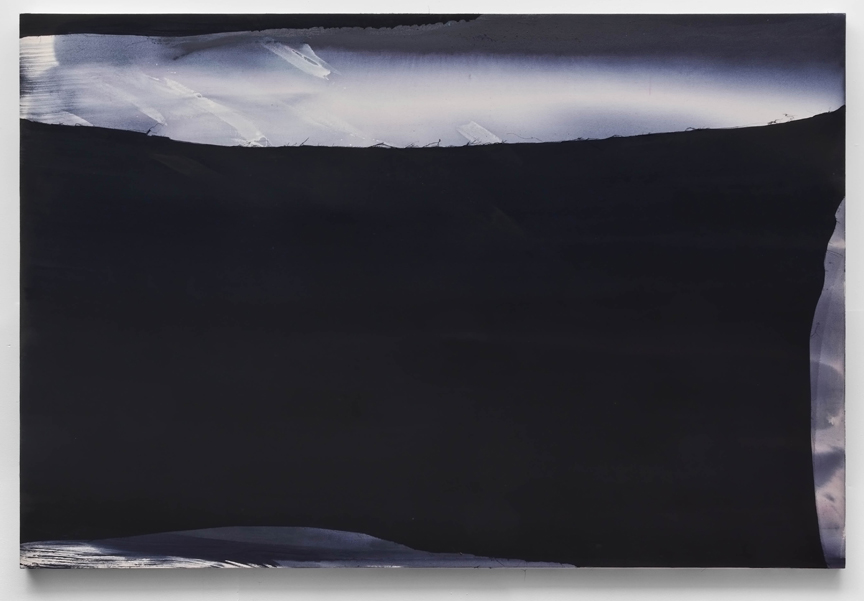 |
|
"ELEGY I-I", 2012, acrylic and collage on canvas, 72 X 108
|
#Throw Back Mondays (originally posted 6/7/13)
Society805 interviews Mara De Luca in conjunction with her exhibition at Luis De Jesus gallery in Culver City.
S805: Mara, you’ve evolved a specific technical approach to your current work that involves more than painting, using fabric overlays, that from a distance still reads as painting, but with a unique atmospheric aspect to it. Could you talk about the evolution of this approach and its significance to you?
Mara De Luca: I approach the use of fabric overlays as a "ready-made" element- a conceptual gesture integral to the process, visual effect and overall meaning of the painting. The fabric behaves in several ways, depending on how it's being used in each pictorial context; in some paintings, I think of the overlay as a literal scrim, with direct references to theatrical sets (behaving as instant atmosphere, as in: black scrim = night). The scrim also refers to art historical precedents, Romantic painterly effects (light, fog, clouds) cross-bred with California Light and Space works (Robert Irwin's scrim installations, for example). In other pieces, where I've torn and manipulated the fabric, the overlay acts as painterly gesture, albeit without any paint or brush involved. I think of the collaged elements as analogous (in terms of the ideas I've mentioned above: instant atmospheric effect, theatricality and 'fake' painterly gesture) to the essence of what I've termed a "facile sublime" specific to Los Angeles, which ultimately is at the core of my work.
S805: Speaking of the sublime, In the recent show at Luis De Jesus, the fabric overlays enable us to see blacks with this tremendous color depth, with the cognitive effect of looking into night shadows or dark space where the sense of surface dissolves and your paintings are able to give us something that we don’t expect from flat paint. During the last show you put on a wonderful panel discussion on the sublime, yet it is this more recent show that seems to address the sublime more directly. How do you see the two shows working together?
With the work I exhibited in "Leap of Faith" at Luis De Jesus in 2011, I was interested in vacuous, banal or empty content in relation to an L.A. sublime, however unlikely that might sound; in terms of imagery, I looked to digital abstraction, graphic color and lighting effects (prevalent on internet websites and digital billboard advertisement around the city). I attempted to capture the feeling of expansive emotional emptiness of such contemporary phenomena as self-improvement ideology, social networking and reality television; I took that "lack" of content and imbued it with a kind of literary romanticism, which appeared as names and texts scrawled across empty sky vistas in synthetic color. My process with that work, similarly to the Elegies paintings I showed recently, also involved poured paint and collaged fabric overlays. But, since I was working from digital sketches I developed in photoshop, I saw the paint marks, color fades and ready-made fabric elements as "hyper-analog", a term I came up with to describe a translation of digital mark-making to a 'hyper' or grossly-analog gesture. The paintings were made to look like actual-size digital printouts, as if I had taken a marquee tool and sectioned off a piece of digitally rendered sky.

ELEGY I-I, 2012, acrylic and collage on canvas, 72 X 108
The work I showed most recently is in fact more directly addressing a "sublime" aesthetic, since the paintings derive from three specific sources: in subject, the "Duino Elegies" of Rainer Maria Rilke, a darkly existential work that speaks of spirituality, solitude, love and death. In terms of color and effect, I looked to the seductive imagery of high-fashion advertisement, Gucci and Dior specifically, which not surprisingly shared the drama and mood of not only Rilke's poetry, but also Romanticism in general- Turner's or David Friedrich's paintings, for example. Lastly, I set these elements in a Los Angeles-inspired landscape; the paintings loosely allude to hills set against dusk skies and nighttime atmosphere.
I see the two exhibitions as similarly addressing the sublime through sources of extreme superficiality and profound aesthetic and intellectual depth, qualities that define my daily Los Angeles experience and that in my mind, at a certain point, become strangely interchangeable.
S805: What is your relationship to Los Angeles? Do you feel supported?
I moved to Los Angeles (from Berlin, Germany, where I'd been living for five years) to attend graduate school at CalArts. I'd never been to southern California before, and the relationship was slow to progress at first, but I've come to love L.A. in all its contradictions; I love the beauty of the natural landscape and the uninterrupted view of the sky, but I am also a fan of all the Hollywood fanfare and urban culture of the city.
I do feel a huge amount of support from colleagues and peers. As anyone who went to school here might tell you, L.A. has a tightly knit art community that is of high professional caliber and also exceptionally supportive. We are a lucky bunch.
S805: Where to next? Is there anything else you’d like our readers to know about you or your work?
S805: Where to next? Is there anything else you’d like our readers to know about you or your work?
At the moment, I'm preparing for a solo exhibition with Quint Contemporary in La Jolla that opens in early June. I'm excited about the context of the exhibition, which points to a direct relationship with the work of southern California Light and Space artists represented by the gallery. I am also developing a new project for EXPO Chicago's Exposure series, taking place in September and presented by Luis De Jesus Los Angeles.
For more information about Mara de Luca please visit her website
www.MaradeLuca.com

